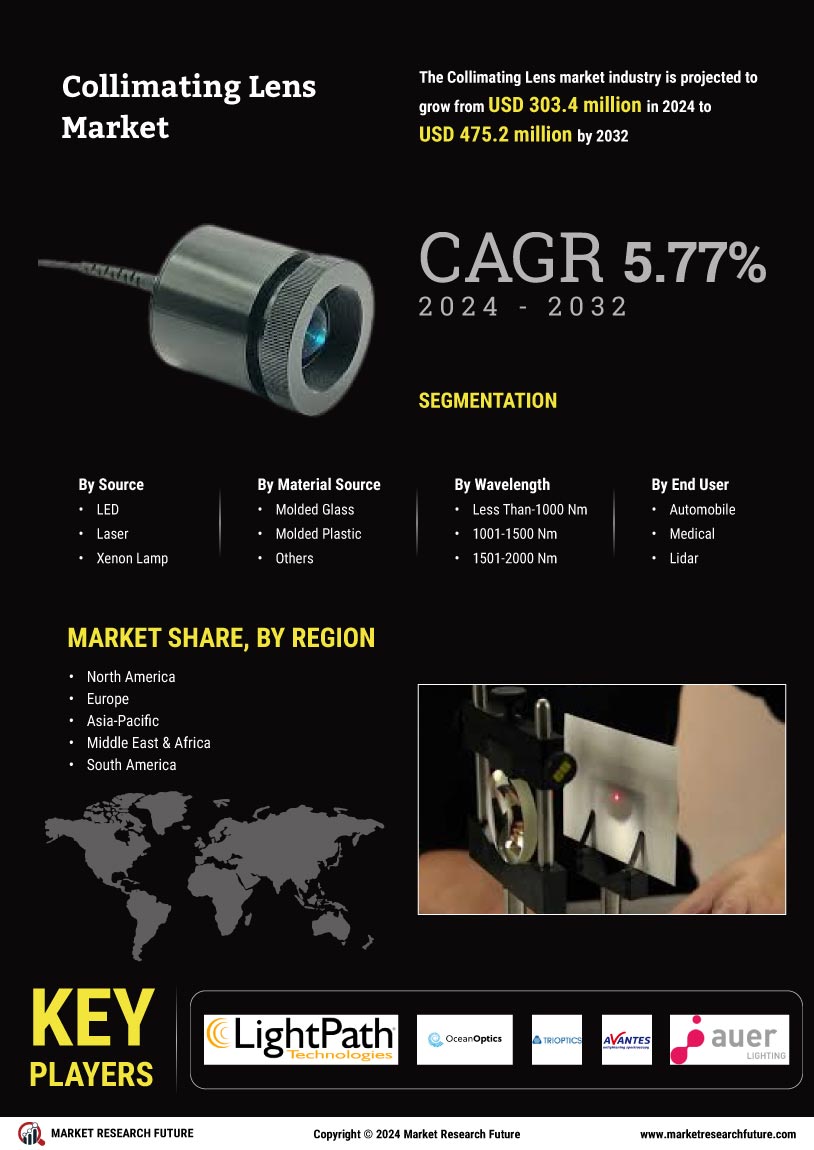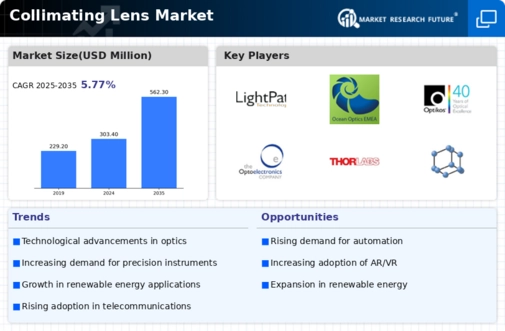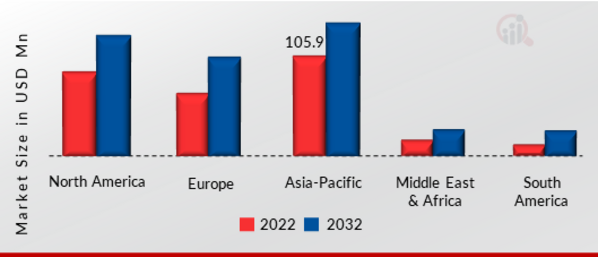Collimating Lens Market Summary
The Global Collimating Lens Market is projected to grow from 303.40 USD Million in 2024 to 562.46 USD Million by 2035.
Key Market Trends & Highlights
Collimating Lens Key Trends and Highlights
- The market is expected to experience a compound annual growth rate (CAGR) of 5.77 percent from 2025 to 2035.
- By 2035, the market valuation is anticipated to reach 562.3 USD Million, indicating robust growth potential.
- in 2024, the market is valued at 303.40 USD Million, reflecting a solid foundation for future expansion.
- Growing adoption of advanced optical technologies due to increasing demand for precision in various applications is a major market driver.
Market Size & Forecast
| 2024 Market Size | 303.40 (USD Million) |
| 2035 Market Size | 562.46 (USD Million) |
| CAGR (2025-2035) | 5.77% |
Major Players
Lightpath Technologies, Ocean Insight, INGENRI, Trioptics GmbH, Avantes BV, Auer Lighting GmbH, Optikos, IPG Photonics Corporation, The Optoelectronics company, Thorlabs, Inc., AMS Technology AG, Axetris AG, Bentham, Focuslight Technologies Inc., Edmund Optics Inc., Quarton Inc.

















